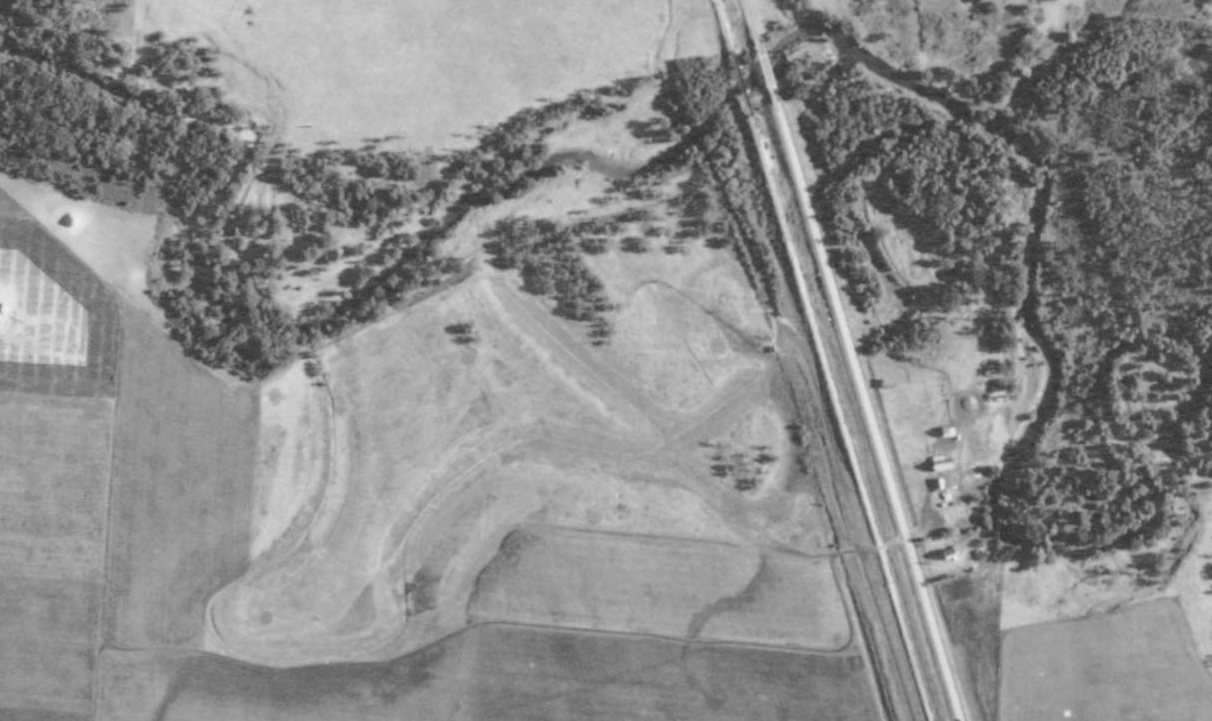Which Minnesota golf course is closest to the northwestern corner of the state? Close call. Really, really close.
The margin is thin — blade-of-bentgrass thin, figuratively speaking.
I was going to say it’s a heated competition, but since we’re only a quarter of a tank of gas away from Canada, “heated” might not be the best adjective.
Presenting the contenders for the title:
In this near-corner, Lancaster Riverside Golf Course, in north-central Kittson County. The first tee at Riverside lies 21.59 miles from the convergence of the borders of Minnesota, North Dakota and Canada, near the city of Emerson, Manitoba.
And in the other near-corner, Two River Golf Club in Hallock, west-central Kittson County. The first tee at Two River lies 21.04 miles from that same point of trilateral convergence. So that makes Two River closest to the corner, by the margin, literally speaking, of a few dozen wheat combines set side by side.
What’s the point? There is none, I suppose, except to perhaps answer a question of Minnesota golf-and-geography trivia. (Or maybe this corner stuff matters to me only because I grew up playing the Minnesota course closest to the southeastern corner, Ma Cal Grove in Caledonia. 440.6 miles away from Two River.)
Still, neither Two River nor Lancaster takes the all-time northwestern corner cake. That distinction, as far as I can determine, belongs to this place …
… “My first recollections of the Hallock Golf Club are the late twenties when the course was located a mile north of town — on the west side of the Great Northern tracks and just south of the North branch of the Two River,” wrote R.C. Nelson, a Hallock businessman and banker, for the Hallock Centennial Book 1883-1983 and reprinted here with permission of the Celebrate Hallock committee.
So, for the record, Hallock Golf Club, now a lost course, is the northwestern corner king. The course’s site, now undeveloped, lies 19.2 miles from the MN-ND-Manitoba border. (Don’t get picky on me — I don’t know where the first tee was.)
Nelson described Hallock Golf Club in detail in his writing.
“It was constructed by the local golf enthusiasts — in 1929, was nine holes and of course sand greens,” Nelson wrote. “The terrain was a little rolling and three greens were in the woods, not too far from the river.”

By Nelson’s recollection, the sixth hole was the longest, just over 300 yards, and the ninth was the shortest, just over 100 yards. Par for the course, Nelson wrote, was 34.
“The tees were about six feet by eight feet — a four by four wood frame, filled with packed river sand. As a kid I used to caddy when they had special matches and tournaments and I remember seeing a few wood shafts broken over those four by four wood frames — the result of a whiff or a wild shot.”
A handful of Kittson County Enterprise newspaper entries from the early 1930s also offered tidbits on Hallock Golf Club. The July 11, 1930, edition reported that John Stratte, “eldest son of Dr. and Mrs. Joseph Stratte of this city, made a hole in one on the local course this week.” Stratte’s ace came on the second hole, “about 170 yards.”
In July 1930, the Enterprise reported that golfers from Lancaster had joined Hallock GC. (That city’s Riverside course was established in 1995, according to at least one golf web site.) In August 1930, plans were announce for a Hallock Golf Club tournament “drawing players from all parts of the country” and with the winner to receive a $15 golf bag. “To date,” the Enterprise reported, “the lowest score turned in is a 35 shot by Dr. Treleaven.” Plans also had been drawn up for the “first annual (I forgive the grammatical indiscretion) Kittson County Golf Tournament.” An entry fee of 50 cents was “payable at Taft’s Café or to Mr. Wass.”
In April 1931, a club meeting was held, and annual fees of $10 were set. On May 1, the Enterprise noted that a clubhouse for the grounds was planned.
Nelson’s account noted a timeline typical for golf courses of the era that were destined to become lost courses. “The course remained much the same until the war (World War II) when the number of players dwindled as the younger men went into the service but the old group kept it going,” Nelson wrote. “After the war, new interest developed and a deal was made with the landlord to get a few more acres so the course so the course could be stretched out and so drainage work could be done as the course flooded almost every time there was a shower of rain.”
Later in his composition, Nelson wrote: “The floods finally got the best of us plus the fact that the landlord kept raising the rent so some talk was started towards finding a new site. I tried to get the Lake Bronson Commercial Club interested in attempting to get a new course built on the lake park property — thinking Karlstad, Lancaster and Hallock could get in the act and get a real good course but I couldn’t develop sufficient interest.”
Nelson did not definitively note what year the site northwest of town was abandoned, nor can I make a reasonable estimate based on his writing. He does note his role in the founding of the golf course at the current site — the Two River course, which also has gone by the name Oak Ridge Golf Club / Country Club.
Thanks to Cindy Adams, director of the Kittson County Museum, for providing information and materials.
